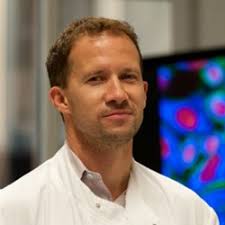
The Signaling Networks Regulating Morphological Heterogeneity
Recorded On: 03/20/2014
-
Register
- Visitor - $50
- Bronze - Free!
- Silver - Free!
- Gold - Free!
- Platinum - Free!
- Community Administrator - Free!
- ISAC Staff - Free!
- Bronze Lab Membership - Free!
- Silver Lab Membership - Free!
- Platinum Lab Membership - Free!
About the Presenter

Chris Bakal, PhD
Dynamical Cell Systems Team Leader
Division of Cancer Biology at the Institute of Cancer Research
Webinar Summary
The Dynamical Cell Systems team is using high throughput functional genomic approaches in tandem with integrative computational technologies to understand the architecture and dynamics of signal transduction networks. They study the biological switches that cause cells to change shape, become cancerous, and spread around the body. By understanding how these switches work, scientists may one day find a way to control them through drugs or other therapies. Cells are able to assume a wide variety of complex shapes in order to carry out different roles, and Dr. Bakal's team examines the genetic and biochemical mechanisms that underpin these shape changes. Their research covers how both environmental and genetic variation affects cell shape. Ultimately, Dr. Bakal aims to understand how normal and cancerous cells can adopt different shapes and why metastatic cancer develops in some people but not others.
CMLE Credit: 1.0

